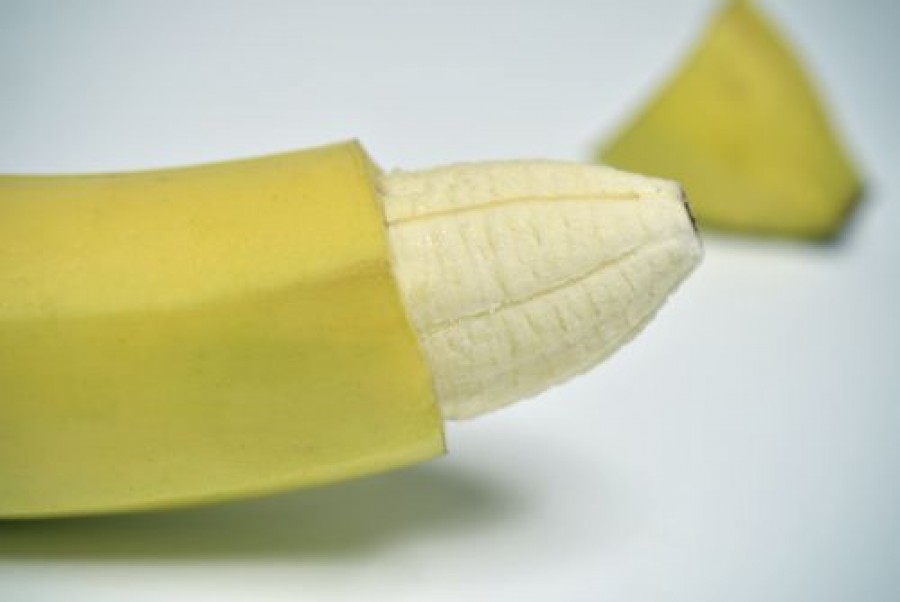Newborn Circumcision: All about Neonatal Circumcision

Many preparations and decisions are made before the arrival of your baby boy. But have you, your partner, and your medical professional discussed circumcision?
What is baby circumcision and what does the procedure entail?
Circumcision is a relatively simple surgical procedure that has been practiced globally for thousands of years. Currently, it is estimated that 10-20% of boys are circumcised in Australia, and about 25% around the world. Circumcision means to “cut around”. During the operation, the foreskin that covers the tip of the baby’s penis is cut away to permanently expose the glans (the head).
Common Methods of Baby Circumcision
There are various methods used for baby circumcision all around the world and they all vary depending upon the specific country’s medical codes, religious practices and other reasons. The following three methods are the most common procedures for circumcision in newborns:
The Mogen Clamp
The Mogen clamp is a probe that is used as a protective cover for the head of the baby’s penis, as well as a guide along which to cut. It is hollow on the side that faces and protects the glans, and is positioned so that glans are free from the clamp jaw. The foreskin is then pulled through the slit of the clamp over the flat top surface; the clamp is locked into place and remains while the surgeon cuts the foreskin that protrudes through the slit. The whole procedure takes about 30 seconds, with the instrument removed a few minutes after bleeding subsides.
The Gomco Clamp
Similar to the Mogen, the Gomco clamp is a bell-shaped device fitted directly over the head of the penis and under the foreskin. The foreskin (which may need to be slit) is pulled over the bell, the surgeon fits the correct size base clamp over the foreskin, and tightens to restrict blood flow. After 5 minutes, the apparatus is removed and the penis is bandaged. The main difference between the two methods is how the amount to cut is gauged: with the Mogen, how much foreskin is pulled through the slit determines the cut; with the Gomco, how far down over the foreskin, the clamp is tightened.
The Plastibell Method
With the Plastibell, a clear plastic ring with a handle and a deep groove along its circumference, is placed tightly over the head of the boy’s penis. Artery forceps (or clamps) are used to separate the foreskin from the glans. The foreskin is pulled over the ring and a ligature is firmly wound around the deep groove, crushing the skin and cutting off circulation. The tissue becomes necrotic and naturally falls off, with the bell, within 3-7 days. This procedure is deemed to be least invasive, as there are no incisions.
It is common place for the professional performing the minor surgery to give your baby an anesthetic, usually numbing cream or local injection, or a combination of both; to alleviate pain,and make your baby as comfortable as possible. The operation usually lasts up to 15 minutes. During this time, if you stay in the operating room, you will want to comfort your newborn by keeping your face near his and provide some gentle, soothing touch. Post-operative cuddles and feeding are also recommended. If you elect to have your son circumcised, discuss with your doctor well in advance about which procedure they routinely perform or recommend, and the anesthetic options available.
When is the right time for circumcision?
The procedure can be performed at any age, and certainly, some adult men will elect the operation on their own. There are reports of risks and complications in babies older than 2 months, so it is advisable to consult your obstetrician about the options far in advance.
Neonatal circumcision is usually performed on healthy and stable newborns within the first 10 days. Frequently, the operation takes place within the first 48 hours if it is not for religious or ceremonial reasons. A Jewish ceremony called a bris is usually performed at home or in a Synagogue by a Rabbi on the 8th day, while other religious ceremonies may have their own guidelines.
Where to have your baby circumcised?
As of 2007, circumcision for non-medical reasons is no longer offered in public hospitals in Australia. Should you choose to have your baby circumcised, it would be best practice to get a referral to a clinic or specialist through your obstetrician or GP. Your health care professional should always provide you with up-to-date and unbiased information relating to the procedure.
Doing your own research and confiding in friends and family may also help with finding the appropriate facility. If you are religious, it may be beneficial to seek advice about practices, ceremonies, and appropriate times from the elders or leaders within your particular belief.
Medical Benefits and Drawbacks of Circumcision
Potential risks and drawbacks of the operation
Circumcision has been practiced for thousands of years and is considered a minor but generally safe surgical procedure. However, as with any medical procedure, there are risks of complications. Pain, swelling, excessive bleeding, and infection are rare but not out of the question.
There is also the slight chance that the foreskin is cut too long or too short, which may cause improper healing or lesser penile sensitivity later in life. Some also argue that the pain caused to the infant is unnecessary and excessive, without providing enough benefits to warrant the procedure.
Benefits of newborn circumcision
Some research proposes that infant male circumcision decreases urinary tract infections, penile cancer, sexually transmitted diseases, as well as foreskin infections. It is also speculated that circumcised men are less likely to transmit HPV to their female partners.Keep in mind that there are no conclusive findings in this research, and other practices such as good hygiene and safe sex may be more adequate preventative measures. After the birth of your son, there is a chance your obstetrician may advise circumcision for medical reasons.
Genetic or infection-caused conditions such as phimosis, can occur later in life, where the foreskin of the penis is too tight and difficult to pull back (retract) over the glans. Paraphimosis, is a similar instance, which can cause the foreskin to get stuck over the glans in a retracted position, and become unable to return to its natural anatomical position. Newborn circumcision nearly eliminates the potential for this condition.
Non-Therapeutic Reasons for Circumcision
In addition to medical elements of circumcision, factors including religious beliefs, cultural practices, aesthetics, tradition, and personal preference should be considered to make an informed decision.
Is your partner circumcised? How will you answer your son’s questions if he looks different to his father; or his peers? You may want to discuss this with your partner and even other male family members who may act as role models to your son. How do you feel about the procedure, ethically speaking? These are all questions that are better answered with careful consideration.
Caring for you baby after circumcision
Give your baby lots of love! Your baby may experience pain, swelling, bruising, and irritation; symptoms which are all normal after a medical procedure. There may also be some yellow discharge or coating, forming over the tip of the penis. This is all part of the healing process, so do not try to remove it.
Delicately clean the area with water, and add a very mild soap for poops; but, keep the area dry otherwise. Some nappy-free time will help aerate the genitalia, and promote recovery.
Inquire with your doctor whether to apply a fresh bandage to the area after each subsequent nappy change, and if it’s recommended to use petroleum ointment, should the newly exposed skin develop irritation.
Remember, it can take 7 to 10 days for the penis to heal after this surgery. However, in the case of persistent bleeding, fever, worsening of swelling and discharge, infection, and other concerning symptoms; do not hesitate to call your doctor.
Caring for your baby if not circumcised
Newborn hygiene is equally important with the uncircumcised penis. Delicately washing the genital area with water and very mild soap will suffice. Although common concern is adequate cleaning under the foreskin, you should not force it!
Do not use any swabs, special cleaning products, or try to forcibly retract the foreskin; this may be painful, can lead to scarring, and other damage. The newborn male’s foreskin is fused to the head of the penis at this age, and the natural retraction of the foreskin does not start to happen until way into the toddler years. Let him decide when is right.
When your child is ready, the bathing process may come naturally. Encouragement and assistance from you or your partner can also establish baby good hygienic habits.
The circumcision decision
When choosing a professional to carry out the procedure, make sure you feel comfortable with them and their knowledge on the subject, and that they feel confident dealing with any unlikely (but plausible) complications. Feeling safe and optimistic with your medical team will facilitate a more successful procedure.If you forego the snip, be equally prepared to explain it to your son.
Ultimately, it is up to you and your partner to decide, as circumcision is a discretionary procedure. There are no conclusive studies to show that one option is better than the other, and if any publication aims to sway you in their favour, seek unbiased advice.
Most importantly, have the conversation with yourself and your partner about why or why not to have your son circumcised. Start this discussion early enough during your pregnancy to allow adequate time to make an informed decision. Remember, this is going to be one of the hundreds of parenting choices you will have make. For each of those, there will rarely be a right or wrong; but in the end you must make the best choice possible, not for you, but for your son.



